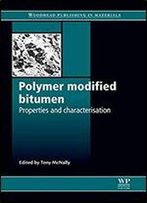
Mechanical Alloying: For Frabrication Of Advanced Engineering Materials
by M. Sherif El-Eskandarany /
2001 / English / PDF
4.9 MB Download
Unique in bringing about a solid-state reaction at room
temperature, mechanical alloying produces powders and compounds
difficult or impossible to obtain by conventional techniques.
Immediate and cost-effective industry applications of the resultant
advanced materials are in cutting tools and high performance
aerospace products such as metal matrix armor and turbine blades.
The book is a guided introduction to mechanical alloying, covering
material requirements equipment, processing, and engineering
properties and characteristics of the milled powders. Chapters 3
and 4 treat the fabrication of nanophase materials and nanophase
composite materials. Chapter 8 provides extensive coverage of
metallic glass substances.
Unique in bringing about a solid-state reaction at room
temperature, mechanical alloying produces powders and compounds
difficult or impossible to obtain by conventional techniques.
Immediate and cost-effective industry applications of the resultant
advanced materials are in cutting tools and high performance
aerospace products such as metal matrix armor and turbine blades.
The book is a guided introduction to mechanical alloying, covering
material requirements equipment, processing, and engineering
properties and characteristics of the milled powders. Chapters 3
and 4 treat the fabrication of nanophase materials and nanophase
composite materials. Chapter 8 provides extensive coverage of
metallic glass substances.
This book is ideal for materials scientists in industry and in
research, design, processing, and plant engineers in the cutting
tools and aerospace industries as well as senior level students in
metallurgical and mechanical materials engineering. The book will
especially benefit metallurgists unacquainted with ball milling
fabrication.
This book is ideal for materials scientists in industry and in
research, design, processing, and plant engineers in the cutting
tools and aerospace industries as well as senior level students in
metallurgical and mechanical materials engineering. The book will
especially benefit metallurgists unacquainted with ball milling
fabrication.











